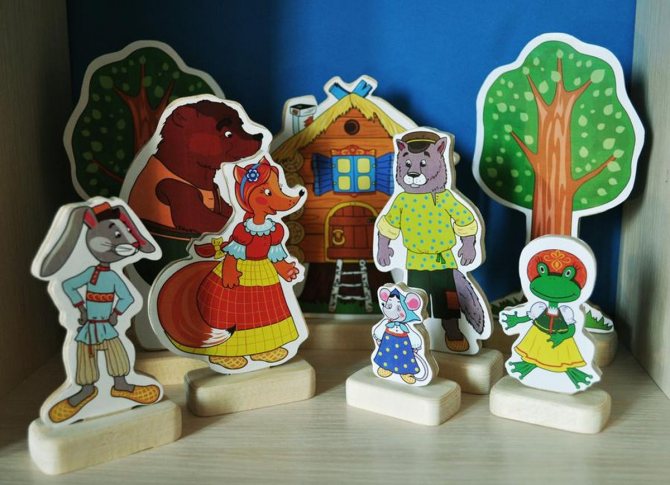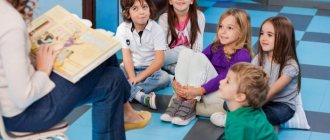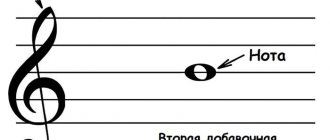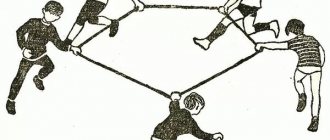The role of theatrical activities in kindergarten
Theatrical activity is a special type of role-playing games that provide the full development of the child’s abilities. At this stage of growing up, it is very important that children focus entirely on the world that needs to be known and themselves, which need to be loved with all their strengths and weaknesses. The theater provides such a fenced area where the child feels like “the center of the universe” and can share emotions. At the same time, children do not perceive classes as lessons, because what is happening looks like a fun game with costumes and beautiful scenery. What skills do children acquire?
- Physical activity. During classes, children move a lot: they improve their body flexibility and endurance, and memorize the movements of dance numbers.
- Logical abilities. Memory, attentiveness and concentration on business naturally improve. Imagination and creative thinking develops.
- Social experience. Through fairy tales and stories, children learn social experience: norms and rules of behavior, responsibility for their actions, the few responsibilities that are imposed on children.
- Moral orientation. Each literary work conveys moral nuances such as “good and evil”, “love and hate”, which help children understand their own feelings and do the right thing.
- Social relations. Through characters, children see how family members, friends or enemies interact with each other, after which they can copy examples of behavior and adapt to social society.
- Acting skills. Children learn to express their feelings through movements, words and facial expressions. Sharpen your skills and unleash your creativity.
- Developing your own opinion. Through heroes, the child sees both good and bad deeds. Evaluates the consequences and forms an opinion.
Goals and objectives of theater in the development of children
The purpose of theatrical activity is to show the child the diversity of the world around him and teach him to interact with this environment. Those. In the process of classes, children not only gain comprehensive knowledge about the structure of the world and human relationships, but also get rid of fears that hinder a harmonious life in society.
Achieving the goal occurs through solving the following tasks:
- Developing children's curiosity. Through interesting tales and vivid images of characters, the theater teaches children curiosity and immersion in an issue of interest.
- Getting rid of stiffness and tightness. Children “hide” behind the characters, literally stand in their place, perform brave deeds and gradually stop being shy on stage, which will later help them perform at the board.
- Development of speech and articulation. Children correct incorrect pronunciation of words, expand their vocabulary and express their thoughts beautifully. They also learn to control the body, which helps get rid of complexes.
- Formation of a quick reaction to events. Children are able to assess the situation, react correctly and express their opinion, which helps to get out of unforeseen circumstances and has a positive effect on self-confidence.
- Collaboration with the team. Children learn to value common activities, coordinate their actions with others, and be part of a team.
Important! When choosing theatrical activities, it is necessary to take into account the age of the children. Kids will not cope with a full-fledged role: they are not used to performing on stage in front of many people, they do not know how to express feelings and may be afraid of responsibility. On the contrary, older children will get bored at an event where their participation is not required.
There are several age-specific methods for theatrical games:
Junior group. The main role is played by educators or parents, and children pick up the game whenever possible. Usually they become extras who shout “Snow Maiden!” following Santa Claus or repeating dance moves after adults. They can control their own toys and imitate the characteristic movements of the characters: for example, a dog wags its tail and barks, and a cat rubs its legs and meows.
Middle group. Children participate in performances of songs, dances, games and fairy tales. Now it is not enough for them to be themselves or to repeat after the teacher - first they need to learn the correct behavior: memorize several consecutive dance movements or several lines of a poem. There is also training in artistic and figurative means for expressing feelings such as facial expressions, intonation and pantomime.
Senior group. Children perform dramatizations based on works of art, where they get full-fledged roles. They play as the main or secondary character using dolls and flat figures. They are imbued with the spirit of their hero, conveying his emotions through the voice and movement of the doll. They can already come up with a small scene on their own or change part of the work to suit modern realities.
Preparatory group. Children perform costume plays based on works of art or their own stories. Improve acting skills and the transfer of artistic images. Evaluate the character and actions of their character. They develop creative independence in conveying his image: how the character moves, what voice he speaks, what feelings he experiences, etc.
Types of theater for children

- Theater on the stand
A stand theater is a specific surface on which decorations and figures are attached. The action takes place within this surface. With light movements, the teacher creates the reality of the fairy tale: he places and moves figures, imitates their voices, waves his arms or stomps his feet at dramatic moments. And when the hero first appears, children can guess who it is. Happens:
- Flannelograph is a fabric surface on which figures are attached with Velcro. Suitable for low-moving tales;
- A magnetic stand to which figures are attached using magnets. Suitable for moving fairy tales, because these figures are easy to drag without removing;
- Shadow theater - instead of a screen, a white cloth is used, behind which there is a lantern. The characters become black figures or palms folded into recognizable shapes;
- A stand-book is a large book that already depicts the events of a fairy tale. The teacher turns the pages as the story progresses and points his finger at the characters who are now speaking.
- Theater on the table
The performance takes place on the table with the help of table toys. Usually the tabletop and transparent curtains are beautifully decorated, behind which the narrator hides and moves the figures with his hand. You can use any toys: straw, fabric, clay, plasticine - the main thing is that they stand steadily on the table and do not interfere with the movement of other toys. By the way, you can invite the children to make homemade toys.
- Theater on hand
The performance takes place using fabric dolls that are pulled over the hand. Such fairy tales are the most emotional due to the fact that the toy constantly moves, jumps, waves its arms and nods its head. Children can also make toys themselves from available materials: for example, plastic bottles, matchboxes, buttons, cardboard, tennis balls, etc. It happens:
- Finger theater, when miniature toys are put on one finger. You can move them left and right and nod your head, expressing strong feelings;
- A glove doll is a full-fledged toy with a head, arms and a body in the form of a dress or a wide shirt. It is worn over the entire hand: the thumb and little finger control the hands, the remaining fingers control the head;
- Spoons - an image of an animal’s face or muzzle is applied to the curved part of the spoon, after which they can be moved left and right or tilted, nodding.
- Theater on the floor
These are performances in which the toys, at first glance, stand independently on the floor. Of course, they are tied to ropes, but the movements are so realistic that the toys cannot be distinguished from living people. Such performances seem like real magic to a child. There are:
- Puppets are dolls that move using strings tied to their limbs. Children do not participate in the performance due to the difficulty in controlling the puppets;
- Giant dolls are child-sized toys. The toy is tied to the child’s body: when you need to move it with your arms or legs, the child uses his arms and legs. And if you need to nod, he tilts his body slightly.
- Costume performances
These are re-enactments in colorful costumes. A group of children prepares a performance in advance: chooses the plot of a fairy tale, distributes roles, learns their lines, imitates the character’s voice and characteristic movements. Such activities fully reveal the child’s creative abilities and allow him to temporarily become a favorite hero. Ready-made performances are shown in front of parents and they have fun.




